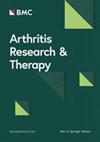Establishment of an ex vivo cartilage damage model by combined collagenase treatment and mechanical loading
IF 4.9
2区 医学
Q1 Medicine
引用次数: 0
Abstract
There is a substantial need for ex vivo cartilage damage models to assess new emerging cartilage repair strategies. Ex vivo cartilage explant models have the advantages of achieving standardized and reproducible experimental conditions while maintaining the cells in their native tissue environment. This study aimed to establish a bovine cartilage damage model to evaluate the safety and efficacy of novel cartilage repair therapies. We hypothesized that combining transient exposure to matrix-degrading enzymes with mechanical loading on bovine cartilage would simulate cartilage damage. Prior to mechanical load, bovine osteochondral plugs underwent a brief 5-minutes treatment with collagenase to induce mild cartilage damage by disrupting the collagen network. To induce a moderate cartilage damage, aggrecanase 1 and aggrecanase 2 were additionally applied to the cartilage for 40 min post-collagenase treatment to degrade aggrecan. Data was analyzed using ANOVA or the Friedman test. Observations revealed a statistically significant loss of sulphated glycosaminoglycan (sGAG) using both Collagenase Treatment (CT) and Collagenase and Aggrecanase Treatment (CAT), while chondrocytes viability was maintained. Both treatments resulted in a significantly elevated release of inflammation markers during the initial two days, including IL6 and nitric oxide. Collagenase treatment also significantly increased neo-epitopes of aggrecan compared to the untreated plugs at day 7, suggesting endogenous aggrecanase activation upon collagen network disruption. The additional effect of mechanical loading on cartilage degeneration was also explored in the CT group. Mildly damaged cartilage treated solely with collagenase could withstand 1 h per day of cyclical load, at 10-20% compression of cartilage thickness combined with interfacial shear at 25 degrees. However, higher compression levels (20-40% of cartilage thickness) with the same shear stress regimen led to a significant increase in surface chondrocyte death, with no evidence of TUNEL staining. This study establishes a promising model for evaluating cartilage repair strategies, and screening anti-catabolic drugs, particularly overload-related cartilage damage.求助全文
约1分钟内获得全文
求助全文
来源期刊

Arthritis Research & Therapy
RHEUMATOLOGY-
CiteScore
8.60
自引率
2.00%
发文量
261
审稿时长
14 weeks
期刊介绍:
Established in 1999, Arthritis Research and Therapy is an international, open access, peer-reviewed journal, publishing original articles in the area of musculoskeletal research and therapy as well as, reviews, commentaries and reports. A major focus of the journal is on the immunologic processes leading to inflammation, damage and repair as they relate to autoimmune rheumatic and musculoskeletal conditions, and which inform the translation of this knowledge into advances in clinical care. Original basic, translational and clinical research is considered for publication along with results of early and late phase therapeutic trials, especially as they pertain to the underpinning science that informs clinical observations in interventional studies.
 求助内容:
求助内容: 应助结果提醒方式:
应助结果提醒方式:


